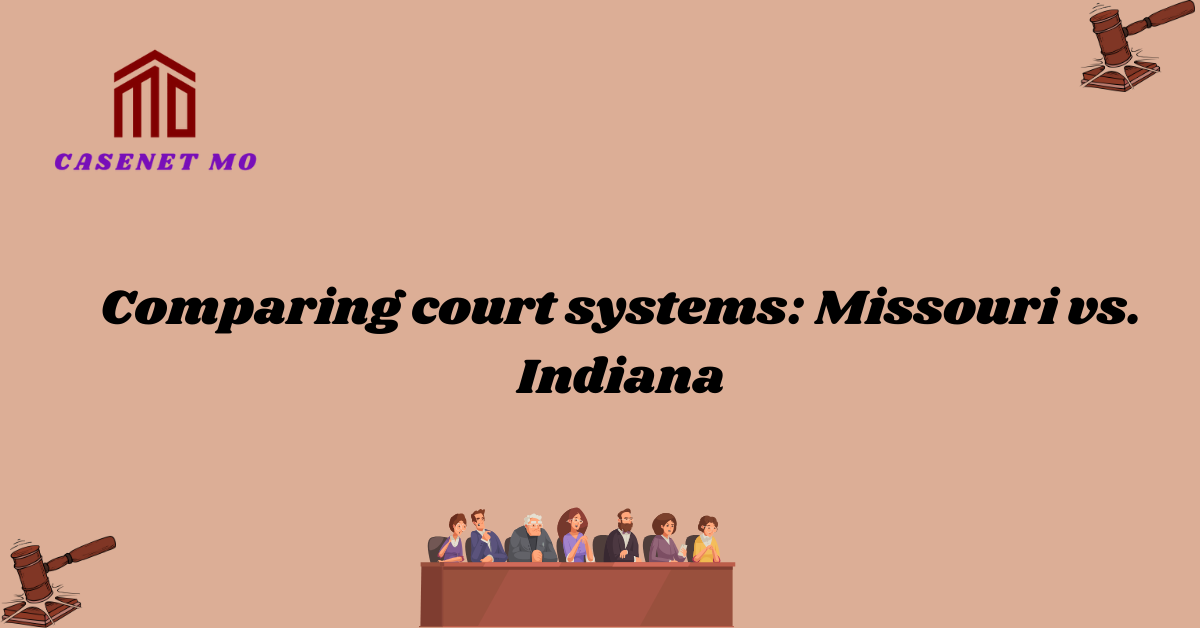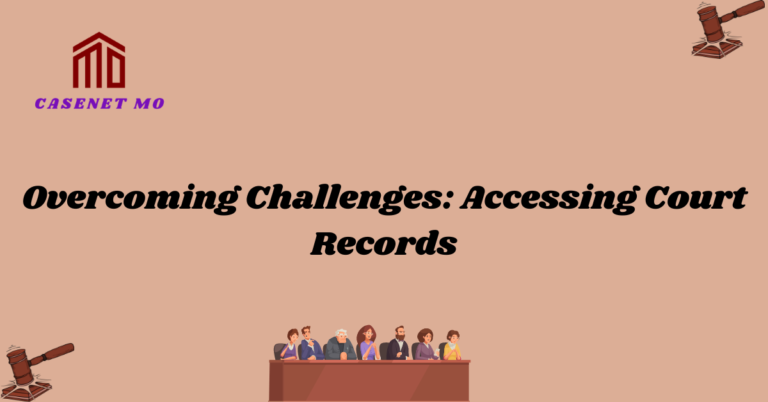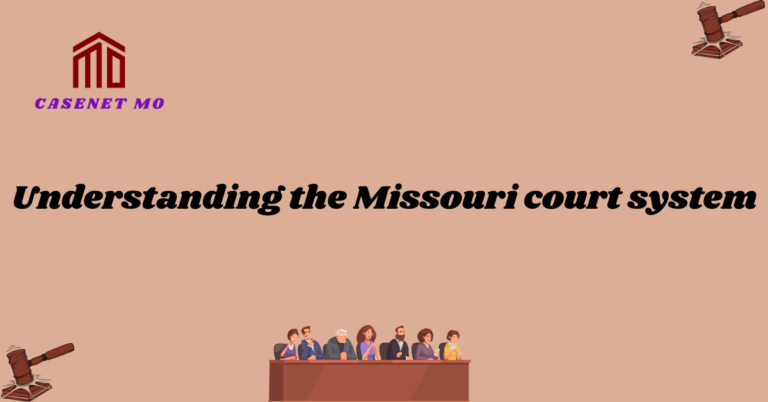Comparing court systems: Missouri vs. Indiana
When it comes to the legal system, understanding the differences between states can be crucial. In this article, we will explore and compare the court systems of Missouri and Indiana. Each state has its own unique set of laws and procedures, and by examining these two systems side by side, we can gain a deeper insight into the functioning of the judiciary.
Missouri, known as the “Show Me State,” boasts a court system that is divided into three main levels: the trial courts, the appellate courts, and the Missouri Supreme Court. With a focus on ensuring justice for all, Missouri’s court system is designed to provide a fair and efficient resolution to legal disputes. On the other hand, Indiana, also known as the “Crossroads of America,” has a court system that consists of trial courts, appellate courts, and the Indiana Supreme Court. With a strong emphasis on upholding the rule of law, Indiana’s courts are dedicated to interpreting and applying the state’s statutes and constitution.
Comparing the Court Systems: Missouri and Indiana
Comparing the court systems of Missouri and Indiana reveals notable differences in structure, jurisdiction, and procedural rules. Missouri’s judiciary comprises a Supreme Court, Court of Appeals, and trial courts, while Indiana’s features a Supreme Court, Court of Appeals, and trial courts with a unique small claims division. Additionally, Missouri’s courts follow the Missouri Rules of Civil Procedure and Missouri Revised Statutes, while Indiana’s adhere to its own set of rules and statutes. Understanding these distinctions is crucial for navigating the legal landscape in each state effectively.
Overview of Missouri’s Court System
In the “Show Me State” of Missouri, the court system is structured into three main levels: the trial courts, the appellate courts, and the Missouri Supreme Court. Each level plays a crucial role in ensuring justice prevails in legal disputes. Let’s delve deeper into each level to understand how they function.
Trial Courts in Missouri
The trial courts in Missouri are where most legal cases begin. These courts are responsible for hearing evidence, applying the law, and delivering judgments. They provide a platform for individuals to present their cases and seek resolution from the judicial system. With a fair and impartial approach, these trial courts ensure that justice is served.
Appellate Courts in Missouri
Once a decision has been made in a trial court, either party involved in the case has the right to appeal. This is where the appellate courts come into play. Their primary function is to review the decisions made by the trial courts to ensure they were fair and followed proper legal procedures. Appellate courts provide an avenue for individuals to challenge the judgments made in the trial courts.
The Missouri Supreme Court
At the apex of the court system in Missouri is the Missouri Supreme Court. This esteemed institution has the final say on matters of law within the state. Composed of seven judges, the Supreme Court hears selected cases and has the power to interpret and create legal precedents. It plays a vital role in shaping the legal landscape of Missouri.
Indiana’s Court System
Indiana, known as the “Crossroads of America,” also has a well-structured court system consisting of trial courts, appellate courts, and the Indiana Supreme Court. Let’s explore each level to gain insights into how Indiana’s judiciary operates.
Trial Courts in Indiana
Similar to Missouri, Indiana’s trial courts are the initial forums for legal disputes. They handle a wide range of cases, including civil, criminal, and family matters. The trial courts in Indiana are dedicated to providing a fair and impartial platform for resolving disputes, ensuring that justice is served for all.
Appellate Courts in Indiana
When a party feels that an error has occurred in a trial court’s decision, they have the right to appeal to the appellate courts. These courts review the decisions made in the trial courts to determine if any legal errors were made. Appellate courts in Indiana play a crucial role in maintaining the integrity of the judicial system.
The Indiana Supreme Court
At the pinnacle of Indiana’s court system is the Indiana Supreme Court. Comprised of five justices, this esteemed body is responsible for ensuring that the law is interpreted and applied correctly throughout the state. The Indiana Supreme Court has the final say on legal matters within its jurisdiction. It upholds the rule of law and safeguards the rights of individuals.
FAQs
What are the court differences: Missouri vs. Indiana?
Missouri has a three-tiered court system consisting of the Supreme Court, Court of Appeals, and Circuit Courts. Indiana also has a three-tiered system with the Supreme Court, Court of Appeals, and Trial Courts. However, Indiana’s trial courts are further divided into Circuit Courts, Superior Courts, and County Courts.
How are judges chosen in Missouri and Indiana?
In Missouri, judges for the Supreme Court and Court of Appeals are appointed by the Governor from a list provided by a judicial nominating commission. They then face retention elections. Circuit Court judges are elected in nonpartisan elections. In Indiana, Supreme Court and Court of Appeals judges are appointed by the Governor from a list provided by the Judicial Nominating Commission. Trial Court judges are elected in partisan elections.
Managing appeals: Missouri vs. Indiana courts?
Both states have appellate courts that handle appeals from lower courts. In Missouri, appeals from Circuit Courts go to the Court of Appeals, and then cases can be appealed further to the Supreme Court. In Indiana, appeals from trial courts go to the Court of Appeals, and then there’s an option for further review by the Supreme Court.
How do Missouri and Indiana compare in judicial qualifications?
In Missouri, judges for the Supreme Court and Court of Appeals must be licensed to practice law in the state, under the age of 70, and have been a resident of Missouri for at least one year. For Circuit Court judges, they must also be licensed to practice law in Missouri and a resident of their circuit for at least one year. In Indiana, Supreme Court and Court of Appeals judges must be members of the Indiana bar and residents of Indiana. Trial Court judges must be residents of their district or circuit and members of the Indiana bar.
Managing Court Budgets: Missouri vs. Indiana?
Both states have administrative offices to oversee court operations. In Missouri, the Administrative Office of the Courts manages the budget and administration. In Indiana, the Office of Judicial Administration performs similar functions, overseeing budgetary matters and administrative operations of the courts.
Conclusion
By examining the court systems of Missouri and Indiana side by side, we can appreciate the unique characteristics and similarities of each state’s judiciary. Both states prioritize a fair and efficient resolution of legal disputes, with a strong emphasis on upholding the rule of law. Understanding these systems is crucial for anyone navigating the legal landscape, ensuring that justice is accessible to all.







